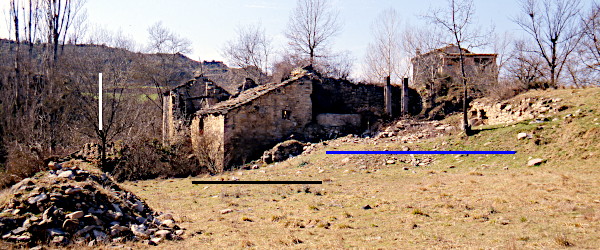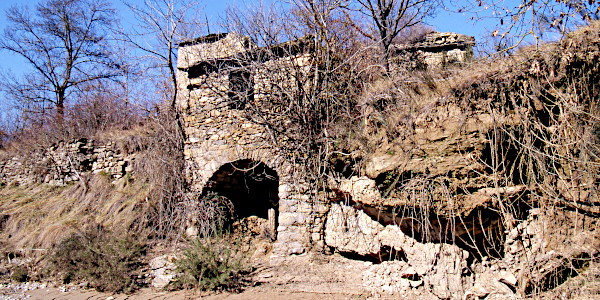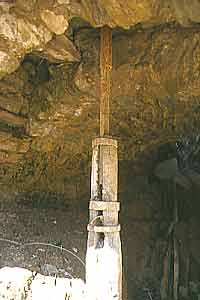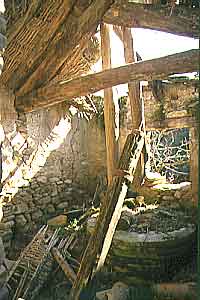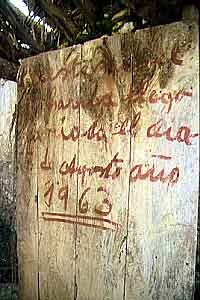The lower grain mill consists of one
small room. One pair of stones was mounted close to the window and took about half
of the available space. The construction is one of the smallest I've seen.
It is smaller than the equally humble mill in
Aso de Sobremonte,
or
Torrolluala del Obico and has about the same size
as the mill of
Pedro Buil.
The cárcavo is wide open, a feature we have also seen in
two of the afore-mentioned mills and in
Bara and
Ainielle.
The axle stands still upright, but the rueda rests below the rubble. I suppose it was made mainly
of wood as this is the case in the upper mill.
The lower harinero has no direct
connection with the embalse. Water had to flow through the cárcavo of the
upper mill before it could reach the rueda of this mill. There is no
extra reservoir to stock the water between both mills. When the upper mill
was running, the lower could only join in or flush the water.
A text written on the door refers to the level of the
waters of the Río Susia during a flood in August 1963 :
aeste nibel de hariba llego la riada el dia 3 de Agosto año 1963
More about this flood, which caused also damage in Sobrarbe and Somontano (
‡) can be read in the
article of Max Daumas (
†).
† Daumas, Max —1964— Les crues du 3 août 1963 dans les hautes vallées aragonaises et catalanes.
In: Revue géographique des Pyrénées et du Sud-Ouest, tome 35, fascicule 3, 1964: pp. 304-310
‡ Read f.e. the daily newspaper Nueva España
of August 4th, 6th, and 7th 1963.


